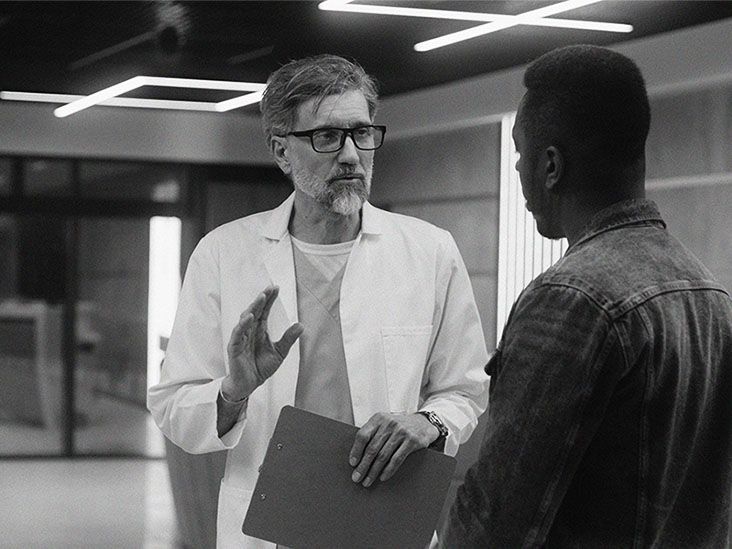Can a family history make you more likely to develop a testicular tumor? Yes having a dad or brother with the disease can boost your odds severalfold, but the overall chance stays low. If you've ever felt a lump, wondered why your uncle's health scares matter, or just want peace of mind, knowing the hereditary piece can help you act fast and keep the odds in your favor.
In this friendly walkthrough we'll unpack what "hereditary" really means, look at the biggest risk factors, show you how to spot early signs, and give you a simple plan to stay on top of your health. Think of it as a chat over coffee straightforward, supportive, and full of useful tips you can use today.
Quick Summary
Is it hereditary?
Short answer: Yes, a family history can increase your risk, typically 212times depending on who's affected. Most men who develop testicular cancer have no known family link, so while genetics matter, they're only part of the puzzle.
How big is the boost?
- Parent with cancer: 24 higher risk.
- Sibling with cancer: 812 higher risk.
- Both parent and sibling: risk climbs even more.
These numbers come from large registry studies, such as the Swedish Family Cancer Database and are echoed by the American Cancer Society.
Genetics Role
What "heritable" actually means
When doctors say a disease is hereditary they're talking about DNA the instruction manual we all inherit from our parents. Some mutations are passed down unchanged, giving families a higher baseline risk.
Key genes linked to testicular cancer
Researchers have pinpointed several genetic hotspots that show up more often in men with testicular tumors:
- KIT a gene that helps cells grow; rare mutations raise risk.
- KRAS & NRAS part of the same signaling pathway, occasionally altered.
- TP53 the "guardian of the genome"; mutations here are a red flag for many cancers.
- More than 70 loci have been flagged in genomewide studies see the Nature Genetics paper for the full list.
Twin and family studies
One of the strongest pieces of evidence comes from twin research. A Nordic twin cohort found that about 37% of the variance in testicular cancer risk is genetic, while roughly a quarter comes from shared environment (like childhood infections or diet).
Expert tip
If you have a close relative with the disease, consider a brief chat with a genetic counselor. They can explain whether a targeted gene panel would be useful for you.
Hereditary Risk
Family history of testicular cancer
Having a dad, brother, or even an uncle diagnosed with testicular cancer makes you watchful. The risk jumps dramatically siblings see the highest boost because they share more of the same genetic lottery.
Age of diagnosis shift
On average, men with a family history are diagnosed 23years earlier than the general population, often in their early 20s rather than late 20s.
Inherited syndromes that matter
Some conditions dramatically raise the odds:
- Klinefelter's syndrome (extra X chromosome) up to a 20 increase.
- Cryptorchidism (undescended testicle) while not strictly hereditary, it often runs in families and multiplies risk 49.
Genetic testing when and why
Testing isn't mandatory for everyone, but it can be helpful if you:
- Have two or more close relatives with testicular cancer.
- Were diagnosed at a very young age (<25years).
- Carry an inherited syndrome like Klinefelter's.
A positive result usually means "higher vigilance," not "certainty of disease." Your doctor will propose a surveillance plan tailored to your level of risk.
NonHereditary Risk Factors
Cryptorchidism (undescended testicle)
This condition alone makes you 49times more likely to develop a tumor. If you were treated for it as a child, keep that history handy for your doctor.
Previous testicular cancer
Men who have already had one tumor face a 12fold chance of a second, often in the opposite testicle.
Carcinoma in situ (GCNIS)
Precancerous cells in the testicle can turn malignant in about 50% of cases within five years if left unchecked.
Other tentative factors
Research hints at links to HIV infection, certain viral exposures, and even tall stature, but the evidence isn't strong enough to call these definitive risks.
| Risk Type | Factor | Relative Risk |
|---|---|---|
| Hereditary | Sibling with cancer | 812 |
| Hereditary | Parent with cancer | 24 |
| Nonhereditary | Cryptorchidism | 49 |
| Nonhereditary | Previous tumor | ~12 |
| Nonhereditary | GCNIS | ~25 (within 5yr) |
Early Detection
Monthly selfexam stepbystep
Grab a mirror or hop in the shower, and follow these simple moves:
- Hold the testicle between thumb and fingers.
- Gently roll it in all directions.
- Feel for any hard lump, smooth nodule, or change in size.
- Check the skin for redness or swelling.
What a suspicious finding looks like
Typical warning signs include a painless lump, a feeling of heaviness, sudden swelling, or pain that doesn't go away after a week. Some men also notice breast tenderness (gynecomastia) or hormonal changes.
When to call a doctor
If you spot anything odd, schedule an appointment within a week. Don't wait for the pain to worsen early catchups are where survival rates soar above 95%.
Clinical Evaluation & Tests
Physical exam & medical history
Your clinician will ask about family history, previous surgeries, and any cryptorchidism. Honest answers let them gauge your hereditary risk more accurately.
Imaging and labs
- Ultrasound firstline, painless, shows solid vs. cystic masses.
- Blood tumor markers AFP, hCG, and LDH can indicate a malignant process.
Biopsy & pathology
If imaging suggests a nonclassic lesion, a core needle biopsy may be done to confirm carcinoma in situ or other pathology.
All these steps follow the NCCN's guidelines for testicular cancer, ensuring you get care that's evidencebased.
Managing Your Risk
Surveillance strategy for highrisk men
Here's a practical schedule you could adopt:
- Annual physical exam with a urologist.
- Semiannual selfexams (or more often if you're nervous).
- Ultrasound every 12years if you have a strong family history or known GCNIS.
Lifestyle tweaks
While no diet guarantees cancer prevention, staying active, eating a balanced diet, and avoiding tobacco can only help overall health and give you a better foundation if treatment ever becomes necessary.
Psychological support
Worrying about a hereditary disease is normal. Support groups like Movember's community or local "Nuts & Bolts" meetups let you share experiences, ask questions, and feel less alone.
Realworld example
Mike, 28, learned his older brother was diagnosed at 24. He started monthly selfchecks, booked a yearly urology visit, and chatted with a genetic counselor who ordered a targeted panel. The results were negative, but Mike's peace of mind skyrocketed, and he feels empowered rather than frightened.
Bottom Line
Hereditary factors can raise your chance of testicular cancer, but the overall risk stays low. The key advantage of knowing your family history is that it nudges you toward early detection and early detection saves lives. Start your monthly selfexam today, tell your doctor about any relatives with the disease, and consider a brief genetics discussion if the risk feels high. You deserve to feel confident about your health, and a little awareness goes a long way.
FAQs
Does having a brother with testicular cancer increase my risk?
Yes. A sibling with testicular cancer raises your risk about 8‑12 times compared to men without a family history.
What genes are most commonly linked to hereditary testicular cancer?
Key genes include KIT, KRAS, NRAS, TP53, and over 70 loci identified in genome‑wide studies.
Should I get genetic testing if only my father had testicular cancer?
Testing is optional but recommended if you have multiple close relatives affected, an early‑onset diagnosis, or an inherited syndrome.
How often should I perform a self‑exam if I have a family history?
Monthly self‑exams are advised, along with an annual urologist visit; increase frequency if you feel anxious.
What early signs should prompt me to see a doctor right away?
Any painless lump, sudden swelling, persistent heaviness, or pain lasting more than a week warrants prompt medical evaluation.
Disclaimer: This article is for informational purposes only and does not constitute medical advice. Always consult with a healthcare professional before starting any new treatment regimen.
Related Coverage
Get detailed info on the most common testicular cancer treatment, side effects, fertility options, and recovery expectations....
Orchiectomy recovery: 2‑3 weeks for tasks, swelling eases by week 4. Get a plan for pain control, wound care, and return to work....
non-seminoma testicular cancer often shows a painless lump in men 15‑35; learn symptoms, tests, treatment options and cure rates....
Explore the latest testicular cancer survival stats, key factors that affect outcomes, and practical steps you can take now....
Chop and go nutrition meal prep makes eating healthy fast and easy. Do some simple prep on weekends to set up easy meals all week long. Learn tips and ideal foods....
Learn how a testicular cancer hereditary family history boosts risk, the main genes involved, and easy steps for early detection....
Spot vital testicular cancer signs – learn the five key symptoms, when to see a doctor, and a quick self‑exam to catch issues....
Find ways to protect testicular cancer fertility with sperm banking, onco‑TESE and monitoring, keeping future family plans alive....
Learn when testicular cancer age peaks, key symptoms, and how early detection at any age can achieve over 95% cure rates....








